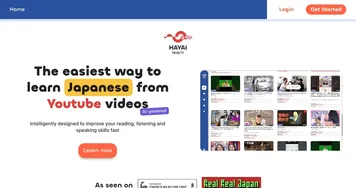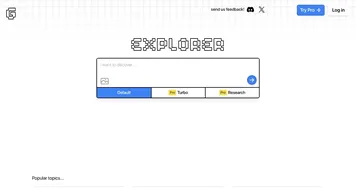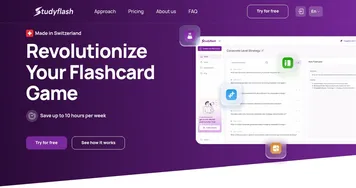Opennote
Ever wonder why note-taking apps feel like they’re stuck in the last century, churning out plain text that vanishes into digital oblivion. OpenNote changes that game, embedding an AI tutor right into your workspace so learning feels alive and tailored just for you. Founded by young innovators from Y Combinator’s Summer 2025 batch, this tool pulls in your existing files from Google Drive or Notion and turns them into something magical, like animated videos or smart quizzes that match how you think. I think it’s a breath of fresh air in education tech, where most tools just summarize without truly engaging.
Take the Feynman feature, named after the physicist who made complex ideas simple. It reads your notes on quantum mechanics, say, and spits out a narrated video with diagrams that explain it step by step, almost like having a patient teacher at your desk. Then there’s Turing, the coding sidekick that analyzes your scripts and suggests fixes or even generates practice problems inline. Users on Product Hunt rave about how it speeds up comprehension, with one reviewer noting it cut their study time in half for tough subjects. But here’s a surprise, it doesn’t stop at solo work, the collaboration mode lets friends join in real-time on interactive whiteboards, sharing AI insights without the chaos of group chats.
Of course, no tool is perfect, and OpenNote has its quirks. The free tier limits you to a few journals and daily chats, which might frustrate heavy users right away, pushing them toward the paid Explorer or Scholar plans that unlock unlimited everything. Compared to competitors like Notion AI, which weaves similar smarts into a broader workspace but lacks the deep educational focus, OpenNote feels more specialized, almost like a coach rather than a general organizer. Or consider Mem, the AI note app backed by OpenAI early on, it organizes thoughts well but doesn’t generate those vivid visuals or proactive feedback as seamlessly. OpenNote’s custom models process queries faster than big names like Llama or GPT, clocking in at under a second for most tasks, which keeps the flow going without lag.
What folks love most is the proactive nudge, like getting corrections as you type, turning passive notes into active learning sessions. It’s empowering, especially for students juggling lectures and assignments, and the student discounts make it accessible. On the flip side, some early users mention the interface could use more polish, feeling a bit clunky on mobile compared to slicker apps like Evernote with its AI add-ons. Still, the integration with real-world tools surprises in good ways, pulling from YouTube transcripts or PDFs to build knowledge bases that evolve with you.
If you’re diving in, start with importing a simple lecture note and letting the AI generate a flashcard set, it shows the potential right away. Experiment with the visual tools during a study group, and you’ll see how it fosters real understanding over rote memorization.
Video Overview ▶️
What are the key features? ⭐
- Visual Learning: Generates videos, graphs, and images directly in notes to enhance comprehension of complex topics.
- Smart Feedback: Offers real-time comments, insights, and corrections as users write without needing separate chats.
- Reference Existing Work: Integrates with Google Drive and Notion to pull in and reference documents automatically.
- Study with Friends: Supports real-time collaboration via interactive whiteboards, shared videos, and AI insights.
- Feynman Model: Creates personalized animated video lessons from notes using custom AI for educational inference.
Who is it for? 🤔
Examples of what you can use it for 💭
- Student: Uses Feynman to turn lecture notes into animated videos for reviewing biology concepts before exams.
- Educator: Leverages collaboration features to share interactive whiteboards with classes for real-time feedback on assignments.
- Coder: Applies Turing model to analyze scripts in notes and generate practice problems for skill-building sessions.
- Researcher: Integrates Google Drive files to reference data and create visual graphs for organizing findings.
- Group Study: Invites friends to co-edit journals, using AI insights to discuss and quiz on shared history topics.
Pros & Cons ⚖️
- Fast AI processing
- Personalized learning
- Free tier available
- Mobile sync issues
- Limited free features
FAQs 💬
Related tools ↙️
-
 History Timelines
Creates interactive historical timelines with ease
History Timelines
Creates interactive historical timelines with ease
-
 LearnWorlds
An AI-powered Learning Management System (LMS) that can turn ideas into interactive courses
LearnWorlds
An AI-powered Learning Management System (LMS) that can turn ideas into interactive courses
-
 HayaiLearn
Accelerates Japanese learning using AI-powered video immersion
HayaiLearn
Accelerates Japanese learning using AI-powered video immersion
-
 Magic School AI
An online platform for educators, offering a wide array of tools to enhance teaching efficiency
Magic School AI
An online platform for educators, offering a wide array of tools to enhance teaching efficiency
-
 Globe Explorer
An AI-powered platform designed to transform how users discover, organize, and share information
Globe Explorer
An AI-powered platform designed to transform how users discover, organize, and share information
-
 StudyFlash
An AI-powered platform that transforms study materials into personalized flashcards
StudyFlash
An AI-powered platform that transforms study materials into personalized flashcards

